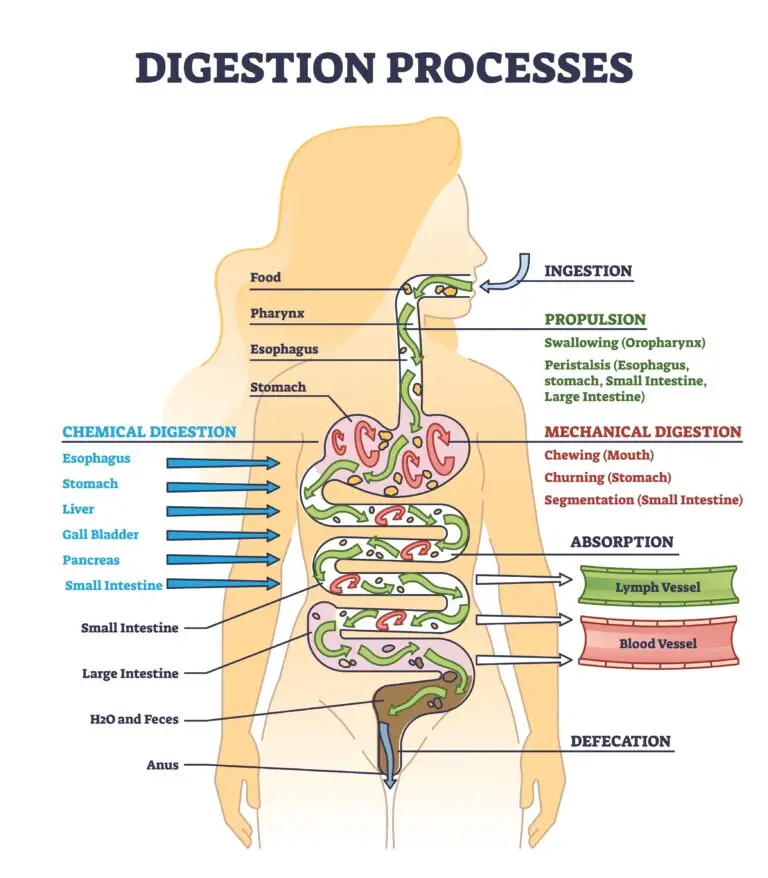Digestion

Table of Contents
What is Digestion?
Digestion is the process by which complex food substances are broken down into simpler, absorbable forms that the body can utilize for energy, growth, and maintenance. It occurs in multiple stages, involving mechanical and chemical processes, and occurs in the digestive system.
The Digestion Process
Digestive System
- The digestive system is a series of organs and structures responsible for the ingestion, digestion, absorption, and elimination of food.
- Major components of the digestive system include the mouth, esophagus, stomach, small intestine, large intestine, liver, gallbladder, and pancreas.
Mechanical Digestion
Mechanical digestion involves the physical breakdown of food into smaller particles. In the mouth, chewing (mastication) breaks down food into smaller pieces, increasing its surface area for enzymatic action.
Chemical Digestion
Chemical digestion involves the breakdown of complex molecules into simpler forms through the action of digestive enzymes. Various digestive organs, including the salivary glands, stomach, pancreas, and small intestine secrete enzymes.
Mouth & Stomach
Digestion begins in the mouth, where salivary glands secrete saliva containing the enzyme amylase, which initiates the breakdown of carbohydrates. Chewing helps mix food with saliva, forming a semi-liquid mixture called chyme.
Gastric juices containing enzymes (such as pepsin) and hydrochloric acid further break down proteins in the stomach. The stomach’s churning action helps mix food with gastric juices, forming a more acidic chyme.
Small Intestine
- The majority of digestion and nutrient absorption occurs in the small intestine.
- Enzymes from the pancreas (e.g., pancreatic amylase, lipase) and bile from the liver and gallbladder (for fat digestion) aid in breaking down carbohydrates, fats, and proteins.
- Nutrients are absorbed through the lining of the small intestine into the bloodstream.
Large Intestine
- Water and electrolytes are absorbed in the large intestine, and the remaining indigestible material is formed into feces.
- Beneficial bacteria in the large intestine contribute to the fermentation of certain substances.
Absorption & Elimination
Nutrient absorption occurs through the walls of the small intestine and goes into the bloodstream. Carbohydrates are broken down into simple sugars, proteins into amino acids, and fats into fatty acids and glycerol for absorption.
Undigested and unabsorbed material, along with waste products, are eliminated from the body as feces through the rectum and anus.
Related Links
Carbohydrate
Catalyst (Biology)
Lysosome
Vesicle